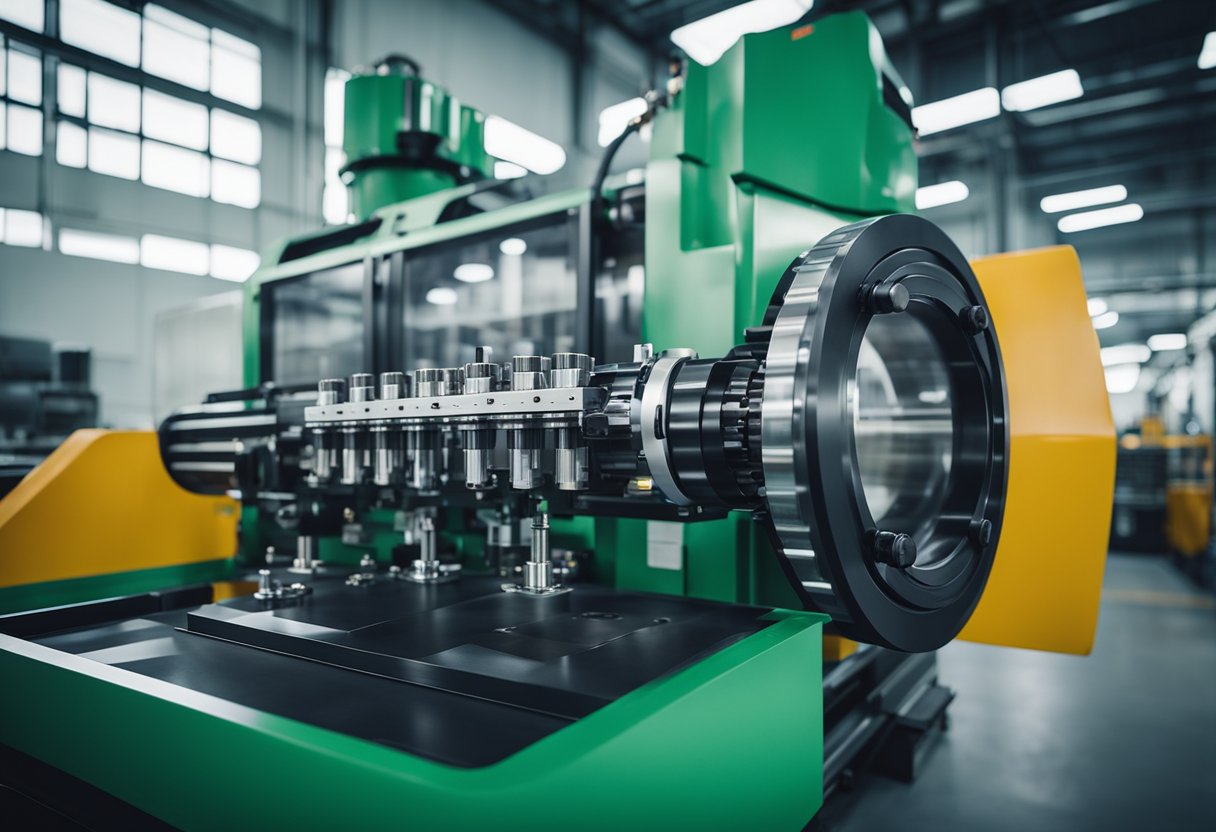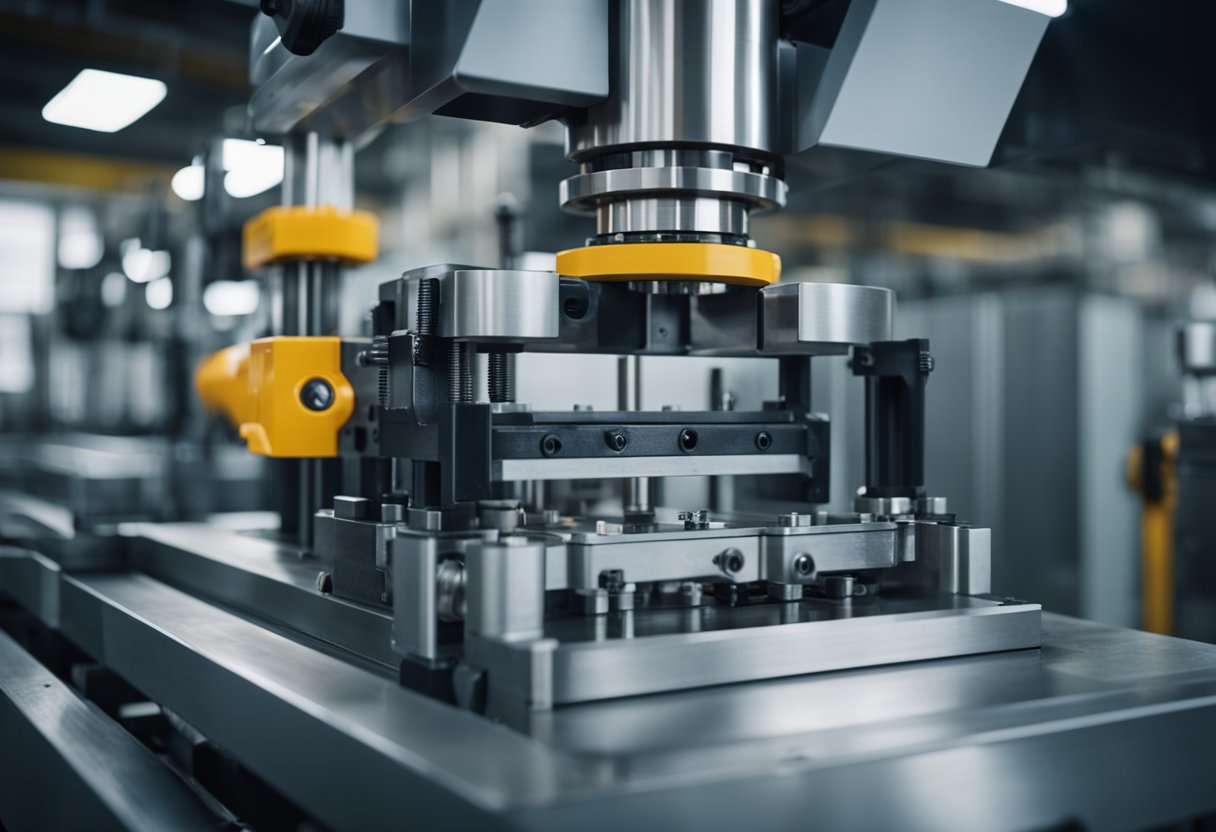If you're in the injection molding industry, you know that calculating the right tonnage for your injection mold tonnage calculation formula is critical to ensuring a successful production run. The tonnage required for your mold depends on various factors, including the size of the part, the material used, and the complexity of the mold. Determining the correct tonnage can be a complex process, but with the right formula, you can ensure that your molds are set up for success.

The injection mold tonnage calculation formula is a straightforward equation that takes into account the projected area of the part, the number of cavities, the injection pressure, and the tonnage factor. The projected area is the surface area of the part that will be in contact with the mold, and it's measured in square inches. The number of cavities is the number of parts that will be produced in each cycle of the mold. The injection pressure is the force required to inject the material into the mold, and it's typically measured in tons per square inch. Finally, the tonnage factor is a number provided by the material supplier that represents the recommended clamp force in tons per square inch.
Injection mold tonnage calculation formula the injection mold tonnage calculation formula, you can ensure that your molds are set up for success. It's important to note that the formula is just a starting point, and you may need to adjust the tonnage based on other factors such as the complexity of the mold or the material being used. However, by starting with the correct tonnage, you'll be well on your way to producing high-quality parts that meet your customers' needs.
Basics of Injection Molding

Understanding Tonnage
Before delving into the tonnage calculation formula for injection molding, it's essential to understand the basics of injection molding. Injection molding is a manufacturing process used to produce parts by injecting molten material into a mold cavity. The material is then cooled and solidified, resulting in a finished part.
Tonnage in injection molding refers to the clamping force exerted by the machine to keep the mold closed during the injection and cooling phases. This force is crucial for achieving quality parts. The tonnage required for a mold depends on various factors, such as the size and shape of the part, the material used, and the number of cavities in the mold.
Injection Molding Machine Types
There are several types of injection molding machines available in the market, and each has its unique features and benefits. Some of the common types of injection molding machines include:
- Hydraulic Injection Molding Machine
- Electric Injection Molding Machine
- Hybrid Injection Molding Machine
- Two-Platen Injection Molding Machine
Hydraulic injection molding machines are the most commonly used type of machine. They use hydraulic pressure to clamp the mold and inject the material into the cavity. Electric injection molding machines, on the other hand, use electric motors to power the machine's movements, resulting in faster cycle times and reduced energy consumption. Hybrid injection molding machines combine the benefits of both hydraulic and electric machines, providing better precision and energy efficiency. Two-platen injection molding machines are used for large parts and high-volume production.
Understanding the basics of injection molding and the different types of injection molding machines available is crucial for anyone looking to calculate injection mold tonnage.
Tonnage Calculation Formula

Calculating the required tonnage for injection molding is crucial to ensure that the molding machine can apply the necessary clamping force to hold the mold closed during the injection process. The tonnage required for a particular injection molded part depends on several factors, including the projected area of the part, the material being used, and the mold design.
Projecting Area
The projected area of the part is the largest one-side surface area of the part being molded, including the area of any runners or sprues. The formula to calculate the projecting area is simple:
Projected Area = Length x Width
Alternatively, if the part is circular, the formula is:
Projected Area = π x Radius^2
Once you have calculated the projected area, the next step is to determine the tonnage factor. The tonnage factor is the recommended clamp force supplied by the material supplier in tons/in². Typically, tonnage factors can range from 2 - 8 tons.
Material and Mold Considerations
Material and mold considerations also play a significant role in determining the required tonnage for injection molding. Different materials have different flow properties, which can affect the clamping force required to hold the mold closed during the injection process.
Additionally, the mold design can also impact the required tonnage. For example, a mold with a complex geometry or multiple cavities may require higher tonnage compared to a simpler mold design.
Most injection molding machine manufacturers provide tonnage charts that relate material, part size, and other factors to required clamping force. These charts can serve as a starting point for your calculations.
To calculate the required tonnage, use the following formula:
Tonnage = Projected Area x Tonnage Factor
It's important to note that this formula provides an estimate of the required tonnage and should be used as a starting point. Other factors, such as mold design and material properties, may require adjustments to the tonnage calculation.
In conclusion, calculating the required tonnage for injection molding is an essential step in the molding process. By considering factors such as the projected area of the part, material properties, and mold design, you can determine the necessary clamping force required to hold the mold closed during the injection process.
Factors Affecting Tonnage Requirements
When it comes to injection molding, the tonnage required for a specific project depends on several factors. Understanding these factors is crucial to ensure that you choose the right tonnage for your injection molding project.
Mold Size
One of the most important factors that affect the tonnage requirement is the size of the mold. The larger the mold, the more tonnage will be required to clamp it shut. This is because larger molds have more surface area, which requires more force to hold together during the injection molding process.
To calculate the required tonnage for a mold, you need to know the surface area of the mold. This can be calculated by measuring the length and width of the mold and multiplying them together. Once you have the surface area, you can use a tonnage factor to determine the required tonnage.
Part Complexity
Another factor that affects the tonnage requirement is the complexity of the part being molded. Parts with more complex geometries require more tonnage to hold the mold shut during the injection molding process. This is because complex parts have more areas where the plastic can flow, which creates more pressure inside the mold.
To calculate the required tonnage for a complex part, you need to take into account the number of gates, runners, and other features that affect the flow of plastic. You also need to consider the size and shape of the part, as well as the material being used.
By taking into account these factors, you can determine the required tonnage for your injection molding project. This will help you choose the right injection molding machine and ensure that your project is a success.
Tonnage Calculation Examples
Step-by-Step Calculation
Calculating the required tonnage for an injection molding machine can be a bit tricky, but it's an essential step in the process. Here's a step-by-step guide on how to calculate tonnage for injection molding:
- Determine the projected area of the part in square inches. The projected area is the area of the part that will be in contact with the mold. This can be calculated by multiplying the length and width of the part.
- Determine the number of cavities. The number of cavities is the number of identical parts that will be produced in a single cycle.
- Determine the injection pressure. The injection pressure is the pressure required to fill the mold with molten plastic. This can be obtained from the material supplier or from a tonnage chart.
- Multiply the projected area by the number of cavities to get the total projected area.
- Multiply the total projected area by the injection pressure to get the clamp tonnage.
- Consult a tonnage chart to verify that the calculated tonnage is appropriate for the material and part size.
Practical Applications
Let's say you need to produce a part with a projected area of 10 square inches, and you plan to produce 4 identical parts in a single cycle. The material supplier recommends an injection pressure of 2 tons per square inch. Here's how to calculate the required tonnage:
- Projected area = 10 square inches
- Number of cavities = 4
- Injection pressure = 2 tons per square inch
- Total projected area = 10 square inches x 4 cavities = 40 square inches
- Clamp tonnage = 40 square inches x 2 tons per square inch = 80 tons
So, in this example, you would need an injection molding machine with a minimum clamp tonnage of 80 tons.
Another practical application of tonnage calculation is determining the appropriate mold size for a given part. By calculating the required tonnage, you can ensure that the mold will be able to withstand the pressure of the injection molding process without breaking or deforming.
Optimizing Tonnage in Injection Molding
When it comes to injection molding, tonnage is an important factor to consider. It represents the amount of force required to keep the mold closed during the injection phase. However, using too much tonnage can lead to problems such as flash, part distortion, and excessive wear on the machine. On the other hand, using too little tonnage can result in incomplete fills, part warpage, and other quality issues. Here are some tips on how to optimize tonnage in injection molding.
Tonnage Adjustment
One way to optimize tonnage is to adjust it based on the size and complexity of the part being molded. This can be done by calculating the projected area of the part and using a tonnage chart to determine the required clamping force. The formula for calculating tonnage is:
Tonnage = Projected Area (in square inches) x Injection Pressure (in PSI) / 2000
The projected area refers to the largest one-side surface area of the part being molded, including the area of any runners or sprues. Injection pressure is typically 2-5 tons per square inch for most materials. By adjusting the tonnage based on the size and complexity of the part, you can prevent quality issues and reduce machine wear.
Machine Selection
Another way to optimize tonnage is to select the right injection molding machine for the job. Different machines have different tonnage capabilities, and selecting the right machine can help you avoid using too much or too little tonnage. When selecting a machine, consider factors such as the size and complexity of the part, the material being used, and the required cycle time. By selecting the right machine for the job, you can optimize tonnage and improve overall quality.
In summary, optimizing tonnage in injection molding is an important factor in achieving high-quality parts and reducing machine wear. By adjusting tonnage based on the size and complexity of the part and selecting the right machine for the job, you can avoid quality issues and improve overall efficiency.





